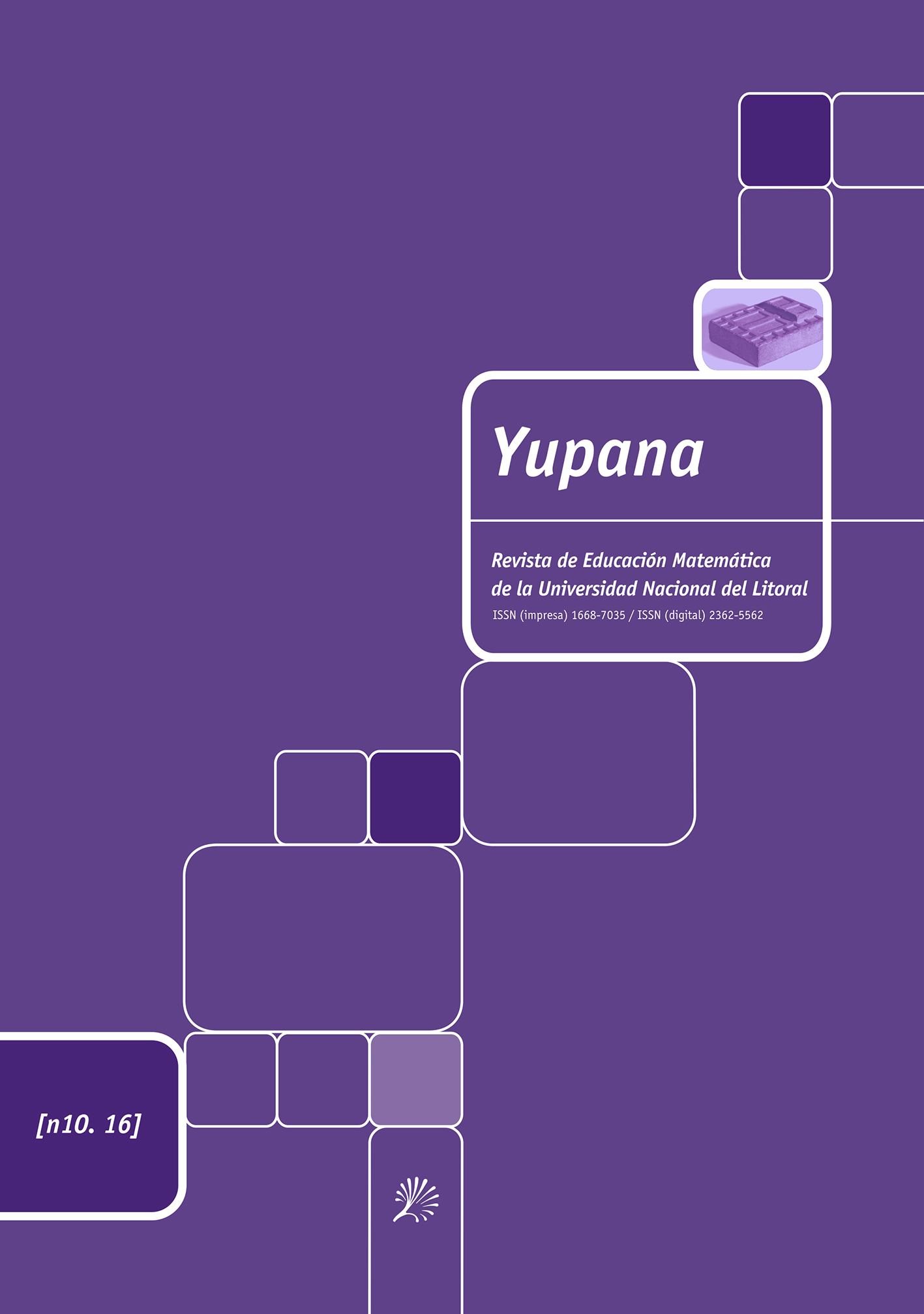GeoGebra: «nuevas» preguntas sobre «viejas» tareas
DOI:
https://doi.org/10.14409/yu.v0i10.7698Palabras clave:
figura–dibujo, copia dinámica, puntos libres, igualdad de dibujos– GeoGebraResumen
Una de las finalidades que se propone el trabajo geométrico en la escuela —y que compartimos— es que los alumnos se apropien de las relaciones que caracterizan a las figuras geométricas, que identifiquen aquellas propiedades que las definen, aquellas otras que se verifican, y puedan dar cuenta, mediante argumentos matemáticos, de la validez que estas adquieren. En un recorrido de largo «aliento» se propicia un tipo de actividad —entre otras— que involucra copiar un dibujo, tarea que puede constituir, en ciertas condiciones, «una manera de comenzar a concebir las figuras en términos de las relaciones que las caracterizan». Estas actividades de copiado suelen trabajarse en «lápiz y papel» con los instrumentos clásicos de geometría y el modo de validar que el dibujo realizado es una copia del original suele efectuarse mediante la superposición.
Con la incorporación del programa GeoGebra se nos abren diversos interrogantes: ¿qué significado adquiere la idea de copia, cuando original y copia ya no son objetos estáticos sino dinámicos? ¿Cómo se decide si el dibujo obtenido es efectivamente una copia del original? ¿Qué maniobras novedosas incorpora el hecho de que el dibujo original también pueda ser transformado? Sobre estos interrogantes ronda este texto, aunque sin la intención de responderlos, solo nos proponemos aportar al debate.






